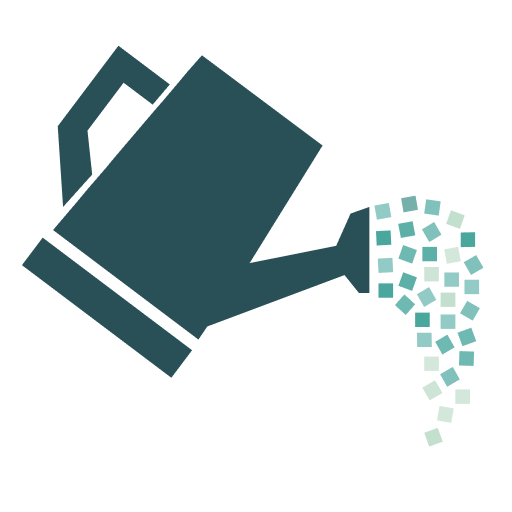Cabbage is a highly nutritious vegetable which also tastes delicious. Fortunately, it is also easy to succeed in growing cabbage. The biggest challenge is that insects, snails, and other animals also like cabbage. Therefore, you should start pre-cultivation of your cabbage indoors. The seedlings you plant out will be better equipped to withstand potential attacks from insects and snails. By sowing cabbage plants indoors early in the spring, you will also give them better time to develop before they are planted outdoors when the weather has become warm enough. This will give you the opportunity to harvest earlier.
For inexperienced growers, pointed cabbage and kale are the easiest cabbage crops to succeed with. They also thrive in lighter soil and do not require as much nutrition as other types of cabbage. You can find cultivation advice specific to the different cabbage varieties in the Digital Gardener. The following are generic advice that applies to all types of cabbage.
Precultivation
Generally, you should start pre-cultivating the cabbage plants 4-6 weeks before you plant to plant out, and they should not be planted out before the last frost night unless you can protect them in a heated bench, tunnel, or similar. Most types of cabbage can tolerate some frost, but several nights with temperatures below 8 °C can cause cauliflower or cabbage to fail to form heads. There are large geographical and local differences in when the last frost occurs, and you should plan based on the cultivation conditions you have where you live.
The easiest way is to sow the cabbage is in plug trays. This way, the sensitive roots are affected as little as possible when the plants are later transplanted. If you repot, make sure that the cabbage is not placed in too large pots, as they may easily get too much moist soil around the roots. Keep the temperature high in the beginning, between 20-28°C. When the first leaves appear, the temperature can be lowered to 15°C. They also need as much light as possible. If you do not have enough space on the windowsill, you should place them under a grow light. If the plants get too little light, they will become thin, tall, and weak.
Cabbage requires a lot of nutrition. If they stay in the same pot for too long, you need to add nutrition along the way. It is easy to see when it is time to give the plants more nutrition as the growth stops, and the leaves turn yellow. Plan to add nutrition a couple of weeks after germination.
When the plants have 4-5 leaves, they can be planted out. The plants should not be too large before planting, as larger plants tolerate the transition worse. A week before planting, the tray should be placed outside for hardening.
Planting out
It is best to plant the seedlings on a cloudy day, as the smallest plants do not tolerate drying out well. Cabbage is generally sensitive to drought and must be watered regularly in the summer months.
It is also sensitive to high heat, and several cabbage varieties will easily bolt if exposed to high heat. If you live in an area with hot summers, you should avoid letting the cabbage mature when it is at its hottest. Instead, plan to harvest the cabbage in late summer, or plant it early for harvesting in June. You can find planting calendars and information on growth periods for different cabbage varieties in the digital gardener.
The plants should be planted a little deeper than they were in the plug, and they should be covered with soil. Cabbage plants need space to develop, and you can find recommended planting distances for different cabbage varieties in the digital gardener. You can also cover the soil with grass clippings. This adds nitrogen that cabbage likes, while also helping the soil retain moisture and preventing weeds from growing (but also watch out for snails).
Harvest
Cabbage can be harvested when the heads have reached a good size. Most types of cabbage can be harvested when the heads are firm and tight. Cauliflower can be harvested when the buds are tight and before they begin to spread. Broccoli should be harvested when the buds are tight and before they begin to flower. Do not wait too long to harvest if the weather is warm. If you leave the cabbage for too long, the heads can split or begin to form side shoots, and the taste can become bitter. Most types of cabbage are harvested by cutting the head off with a sharp knife.
Pests and diseases
Cabbage is susceptible to cabbage fly, cabbage butterfly, and diamondback moth. The plants are most vulnerable when stressed by drought or nutrient deficiency. Make sure to water them and provide adequate nutrition. Another good measure is to cover the cabbage with an insect net. Monitor your plants regularly and pick any eggs and larvae by hand. Cut any snails you see in half with scissors.
Learn more
Would you like to learn more about how to successfully cultivate cabbage? There are plenty of good sources for learning available on the internet. Try one of these sources:
- How to grow cabbage. Growing guide from RHS. https://www.rhs.org.uk/vegetables/cabbages/grow-your-own
- Grow Calabrese and Cabbage for Early Harvests, Use Same Method for Late Cropping Too. Video by Charles Dowding: https://www.youtube.com/watch?v=KZcqSlI_OJE
- Cabbage – Key Growing Information. Growing advice from Johnny Seeds. https://www.johnnyseeds.com/growers-library/vegetables/cabbage/cabbage-key-growing-information.html




